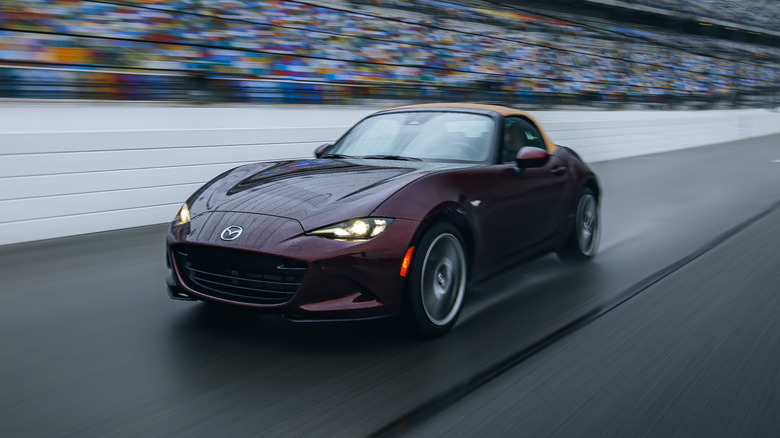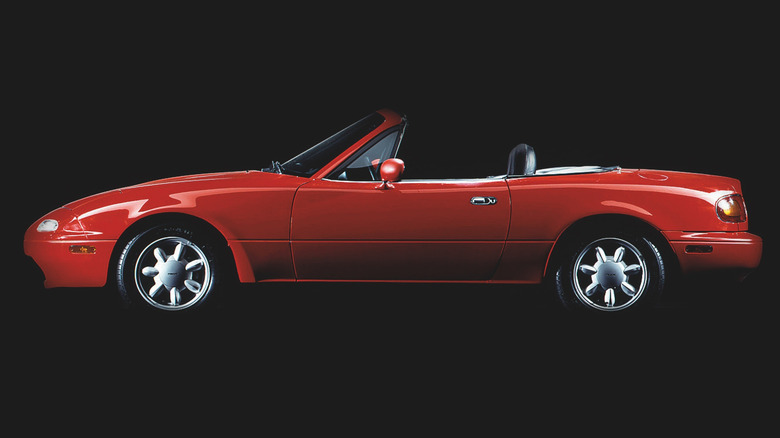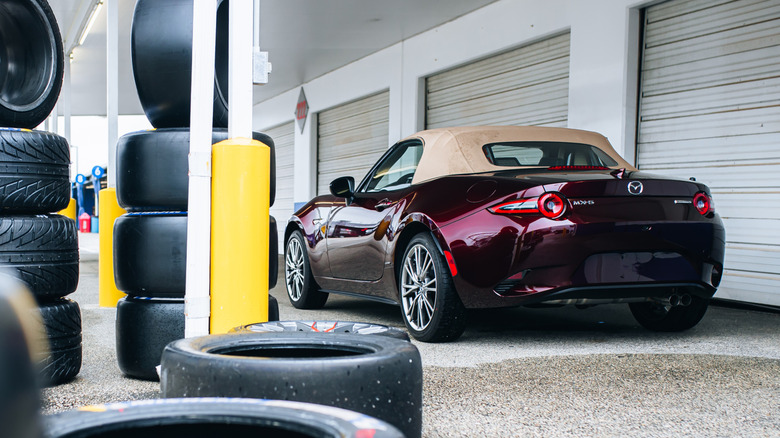What Is 'Jinba Ittai' And How Did It Shape Mazda Cars?
When the original Mazda Miata debuted for the 1990 model year, the sports car world was changed forever. At its essence, the MX-5 Miata was the classic European Roadster reinvented for modern times, mixing in equal parts the fun and personality of a vintage two-seat sports car with the reliability (and price) of a Japanese economy car. It turned out to be a smashing success for Mazda, and even though the Miata has evolved over its four generations, Mazda has taken great effort to keep the Miata's formula intact. It's not the fastest sports car you can buy, and it never was. But in its current form, the Miata remains one of the purest driving experiences that can be had at any price.
At the heart of the formula that's made the MX-5 such a successful and well-revered sports car is the quality of 'Jinba Ittai', which in Japanese translates to "horse and rider as one". That trait is something that's since spread beyond the Miata into the DNA of all of Mazda's vehicles.
From MX-5 to CX-5
Back in the 1980s, when Mazda began to develop the Miata, the engineers and designers didn't just want to recreate the look of their favorite 1960s sports cars. The automaker wanted to build a car that would put driving fun and driver engagement over outright performance. If someone wanted a faster sports car, they could go buy a Corvette or a Porsche. Jinba Ittai wasn't just one of the Miata's missions, it was the Miata's sole mission.
The spirit continues today. As reviewer after reviewer has found, the Miata's modest horsepower and light weight make it a joy to drive, and not just at felony speeds or on a race track, which is where you'll need to go to get even close to the limits of most modern sports cars.
Don't have room in your life for a two-seat sports car right now? Don't worry. You can get a taste of that Jinba Ittai philosophy in Mazda's mainstream vehicles as well. Whether it's the fun-to-drive Mazda3 or even an outdoors-focused CUV like the CX-50, Mazdas have long been praised for their sharp handling and great driver feedback, even if they aren't necessarily the fastest or most luxury-laden vehicles in their classes.
Hopefully Jinba Ittai will stay forever
Though the origins of Mazda's Jinba Ittai philosophy go back over 35 years, the concept may be more important today than it's ever been. In an era where vehicles are more powerful, heavier, and more complicated than ever, the simple and modestly powered Miata has never stood in starker contrast to other sports cars.
When the typical car advertisement is proudly showing off autonomous features that attempt to take driving duties out of the driver's hands completely, Mazda's driver-focused mission continues to be a breath of fresh air to serious enthusiasts and weekend racers, and also just those who enjoy a fun drive on a nice back road.
With Mazda being one of Japan's smaller car companies, combined with the ever-shifting winds of the global auto industry that, at one point, threatened to transform the beloved Miata into an EV, it's hard to say what Mazda will look like in the years to come. That being said, whatever form it may take, here's hoping that Mazda can keep building Miatas and other cars with the Jinba Ittai spirit for decades to come.


